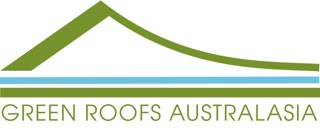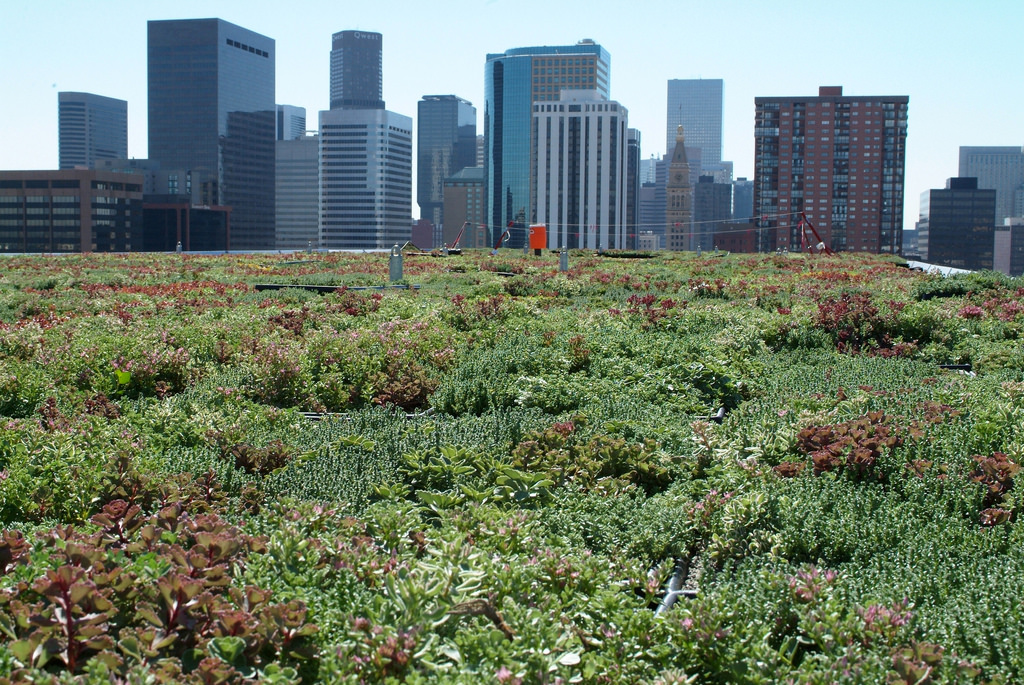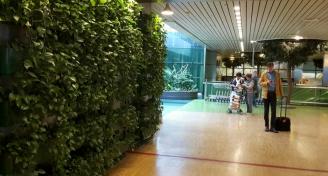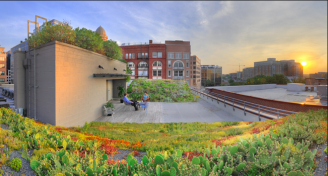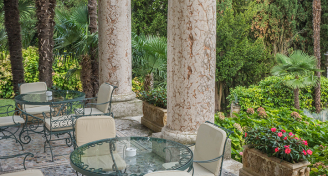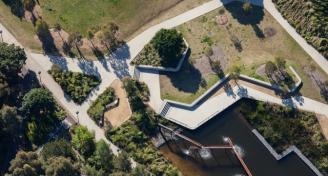Green Roof Benefits on Energy Conservation
Green roofs are becoming increasingly popular in many countries. People are starting to realize just how many advantages a green roof has over a standard roof. Households and big companies are recognizing its benefits and incorporating it into their homes and buildings. So, how can you actually benefit on energy conservation from a green roof?
In short, green roofs are vegetated roof surfaces, meaning the roofs are partially or completely covered with growing plants. Their positive impact is dual: they contribute to the preservation of a building’s roof surface and provide significant environmental benefits.
Conventional roofs don’t help the energy balance in a building, while they neither help the immediate environment. Buildings with poor insulation and ventilation and conventional roofs tend to use more air conditioning, increasing the energy consumption.
On the other hand, there are three factors of a green roof that make a huge difference:
- The plants and growing medium (engineered soil) of a green roof.
- Transpiration – a process in which plants use their roots to take water, releasing it through the leaves.
- Evaporation – the conversion of water from liquid to gas, which comes from both the plants and the growing medium.
All the good stuff
Benefits of having a green roof are numerous; however, the accent is on the reduced energy consumption. It’s possible to present them in the terms of a building and the neighborhood level.
At the building level, green roofs:
- prolong the lifespan of the building’s roof
- reduce the energy consumption, simultaneously reducing the costs for cooling. The National Research Council of Canada issued a publication on green roof benefits where it was stated that temperature fluctuations during spring and summer on a conventional roof were of the order of 45ºC, while a green roof provided the fluctuations in the order of 6ºC. According to German research, green roofs reduce winter bills 3-10%. Canadian research determined that summer savings on the top floor of a building with a green roof would be around 20%, while a two-storey building would have summer savings 10-12%.
- improve aesthetics of the building.
At the neighborhood level, green roofs:
- reduce greenhouse gas emissions by reducing the energy consumption. A study in Chicago estimated that covering an 11-storey building with a green roof would save approximately $4000 in energy per year
- reduce the volume of stormwater and loading of a pollutant
- reduce the infamous urban heat island effect;
- improve air quality, as they reduce the temperature and capture air pollutants by reducing temperatures and capturing air pollutants
- provide habitat.
Successful endeavor of green roofing
If you’re seriously planning on making a green roof, take a look at what the process would look like.
First, you should consult an engineer by no means. The professional will tell you if the building is able to support the load of the roof. If you get a positive answer, start on deciding which plants to grow on the roof.
Generally, drought-tolerant plants are the best option, as they can deal with the limited thickness of soil that doesn’t provide a lot of water storage space. It means that you should opt for plants that can withstand a couple of days without rain. If you really want some other plants to be grown, too, then the solution is to install an automated irrigation system to water the plants more regularly.
Installing irrigation system should also be planned carefully, as many Hoselink experts suggest doing a research on which misting or sprinkler kit you’ll need for your type of roof and the plants you’ve chosen.
In case you want a durable plant, sedums are the best choice, as they can go for weeks without water while blooming at different times in various colors. Their other advantage is a high tolerance of soil poor with nutrients. Perennial grasses and annual wildflowers are also a nice addition.
Heat tolerance is another important factor in choosing the right plants, as green roofs don’t get much shade during the day and are exposed to intensive sunlight most of the time.
Building process in a few words
When it comes to choosing roof membranes, most people opt for asphalt roofs, EPDM membrane, and TPO membrane. Once the membrane is chosen, the substrate or matting is the next step. It usually consists of a plastic tray with cup indentations that serve as water holders. The perforation visible between the cups enables drainage and is covered with a fibrous material. Putting the growing medium is the next step, which usually consists of pebbles, sand, crushed brick and organic matter in very small amounts. It’s important to level the growing medium once it has been spread. The last step is to lay down the plants, which is a quick and easy process.
Final words
Green roofs can be seen more and more around big cities, where people are starting to realize all the benefits of having it. Whether there are numerous households with green roofs around you or you’re the only one in the neighborhood thinking about it, your decision should be made solely on your ability to perform the whole process by the book, so as not to be sorry in a year or less.
ARTICLE SOURCE: Sourceable
IMAGE SOURCE: Flickr
